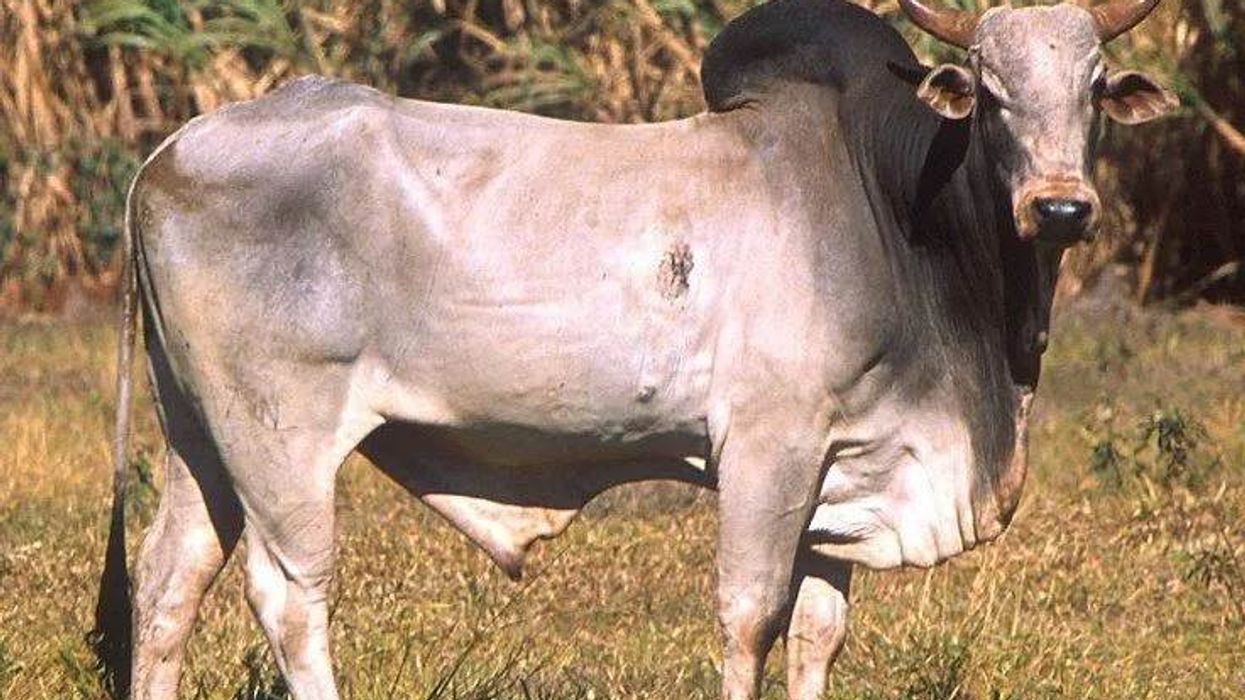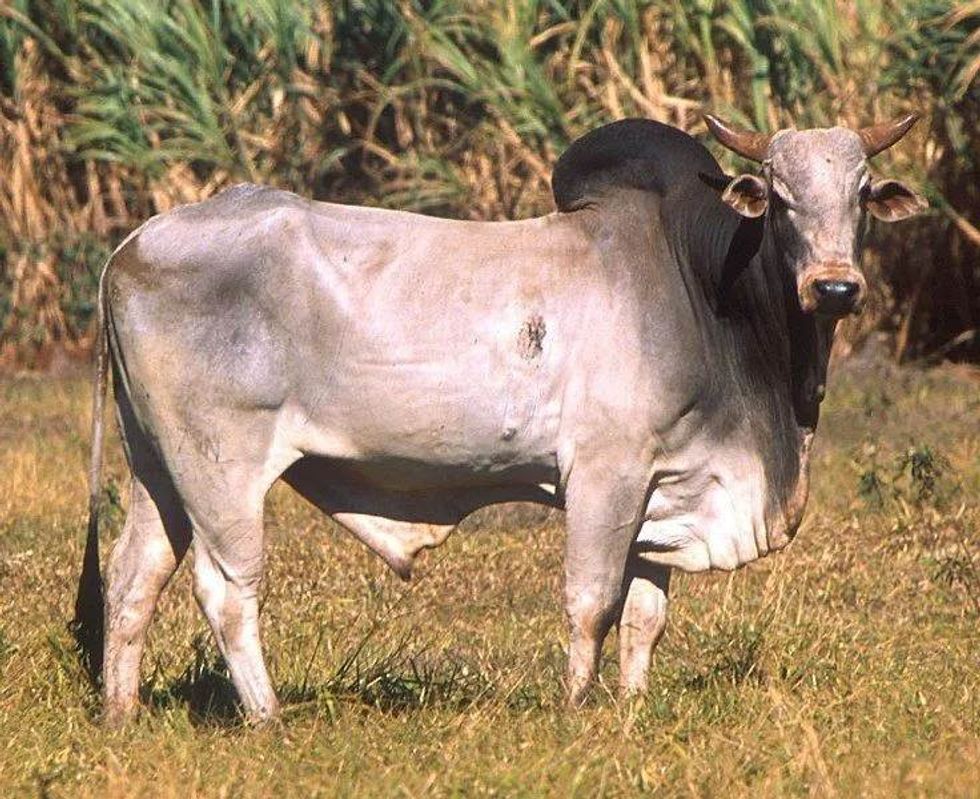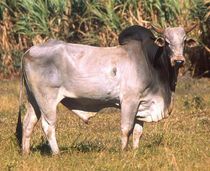Fun American Brahman Facts For Kids
Have you heard about the American Brahmans? The origin of the Brahmans has a matchless success history. The American Brahmans, also known as Brahmans, were developed from the Zebu (Bos indicus cattle of India).
The Brahmans are described as the sacred cattle of India. Through centuries of exposure to harsh climatic conditions, inadequate food supply, diseases, parasites, and insect pests, the Bos indicus cattle developed unique adaptations for survival. The US cattle producers found these characteristics useful for breeding and hence came into being one of the best breeds.
The Bos taurus indicus came from the mixed breed of Zebuine (an Indian cattle) and Taurine (a European country cattle) and four other Indian cattle, including Gir, Krishna Valley guzerat, and Nelore. The history of Brahmans dates back to the 18th century.
So, the original American Brahman breed was developed from 266 bulls and 22 female Bos indicus cattle imported to the USA between 1854 and 1926. The common percentage of the Brahmans and the British breeds in the US cattle industry is not mentioned.
Read the interesting traits of the Brahmans. Also, check out facts about the Highland cattle and Red Angus.
American Brahman Interesting Facts
What type of animal is an American Brahman?
The Brahman cattle are intelligent, curious, and shy animals. They are prudent, robust, and adaptable to harsh climatic conditions and a wide range of feed.
These features also suggest that they are easy to maintain and do not require severe handling methods. Brahman's cattle have kind behaviors and can quickly become obedient. They respond to any type of handling, good or bad; it doesn't bother them; they behave obediently.
The Brahman breed was mainly developed for breeding and enough beef breeds for meat in the beef industry. So, the zebu (from India) was cross-bred with the European cattle breed. The Brahman beef cattle breed was used to develop numerous other cattle breeds like Beefmaster, Brangus, Santa Gertrudis, and Simbrah.
What class of animal does an American Brahman belong to?
The American Brahmans belong to the class mammal and family Bovidae.
How many American Brahmans are there in the world?
The exact number is not known. However, the Brahmans are estimated to be more than millions with their fine breeding qualities.
Where does an American Brahman live?
The Brahmans live on a farm. It is found in the United States and Argentina, Mexico, Brazil, Paraguay, South Africa, and Australia.
What is an American Brahman's habitat?
The Brahman cattle breed plays a unique role in the beef cattle industry in the USA. In the south side coastal regions of the USA and Texas, the breeding of Brahmans is beneficial as they were able to withstand the hot and humid climate and hold out against insects.
In the last few years, the Brahman breed has spread to other parts of the United States. The females are also healthy mothers and produce good milk flow even under extreme conditions for best pairing with the European breeds.
Who do American Brahmans live with?
The Brahman cattle breed lives in packs of their kind.
How long does an American Brahman live?
Brahman cattle breed can live between 15-20 years. Their longevity is the main reason why the beef production industries prefer them.
How do they reproduce?
The American Brahmans reproduce their offspring sexually. After every 21 days, the ovary of the females releases a mature ovum and comes to heat.
This mature ovum travels through the fallopian tube to reach the uterus. The flow of the ovum to the uterus is known as ovulation. If mating is done during this heat period, fertilization of the egg will occur.
In the southern region of Texas and the coastal regions of Mexico between 1910-1920, bred many cattle. It also showed the pairing of the Bos indicus. Many bulls that were used were crosses of other breeds.
Some breeders tried to keep it purebred, but it was less in number. The bulls (Bos indicus cattle) were paired with females from European breeds. By the fifth generation, they reproduced 31/32 offspring.
What is their conservation status?
The conservation status of the American Brahman is stated as 'not at risk,' and is ‘Least Concern’.
American Brahman Fun Facts
What do American Brahmans look like?
The American Brahman size is huge. You can judge Brahman cattle by their large hump over the shoulder and neck. Like the camel, the hump is used to store food and water. The hump is a deposit of fat.
The Brahman's cattle body color varies from light gray or red to black. But most of the Brahmans cattle are light gray and have black pigmented skin.
The hair of the Brahmans is short, thick, and shiny, which makes it easy to graze in the afternoon. The horns are curved upwards, and the ears are hanging downwards.
The Brahmans have a lot of loose skin, which is thought to have the ability to protect the body surface from the sun's rays. Another exciting feature of the Brahmans is the increasing number of sweat glands and the capability to sweat freely.
The Brahman cattle consists of sebaceous glands which produce oily secretion. The sebaceous glands have a strange odor which helps to get rid of insects.
Farmers and ranchers in the south-eastern side of the United States, Texas, Brazil, and Mexico like to raise the Bos indicus cattle breed because they can tolerate the warm conditions and are not bothered by insects. They can survive the harsh weather of any country.
How cute are they?
The Brahman breed's short and thick shiny hair protects the body from the warm sun rays adding its capability to graze in the afternoon without heatstroke. It just looks shining while grazing in the open fields. This makes the cattle look quite cute.
How do they communicate?
The cows are known to talk to each other through their moos. They share how they feel through their mooing.
A study recorded, a sample of 333 grunts and moos of the cattle were analyzed. It is revealed that the cows and bulls have individual voices to contact their herd. The bulls and cows are also known to express their emotions like pain and excitement to their herd.
The Brahmans are intelligent animals and have complex social behavior. The Brahmans interact with each other and form bonds with others, including other cattle and animals, and humans. They mourn the death of their followers and can even hold hard feelings.
How big is an American Brahman?
The Brahman cattle breeds are 59.1-68.9 in (150 - 175 cm) in length. The Brahmans are three times bigger than the Black Angus. The modern Black Angus bulls are only 53 in (134.6 cm).
How fast can an American Brahman run?
The average speed of cattle is 25 mph (40.2 kph).
How much does an American Brahman weigh?
The American Brahman cow size is medium. The bulls weigh around 1600-2200 lb (725.7-997.9 kg). The females weigh around 1000-1400 lb (453.6-635 kg). The bulls are generally larger than the females. The calves weigh between 60-65 lb (27.2-29.5 kg).
What are the male and female names of the species?
The male species are known as the American Brahman bull, and the female species is known as a cow.
What would you call a baby American Brahman?
A baby American Brahman cattle is known as a calf.
What do they eat?
The Brahmans feed on grass, hay, mixed grain, and corn silage. The Brahmans eat around 24 lb a day. It will ingest 2% of the body weight of its own will. This 24 lb of food comprises only dry matter. The grass hays make up 7% of the moisture.
Are they dangerous?
No, the Brahmans are not dangerous to humans. They are incredibly adaptive and obedient. They blend into any environment. While some have described these cattle as shy and more sensitive than other breeds, they do have an aggressive side. The females are known to show their aggressive side only while protecting their calves.
Would they make a good pet?
Yes, they would make good pets since they are obedient. However, due to the body smell of the Brahmans, they must be kept outside in a shed. The Brahmans are usually kept in large numbers by the farmers and ranchers.
The Brahman breed plays an important role in the American agriculture industry. It is the only breed of cattle developed in America that has constantly been ranked number one for its efficiency, strength, and heat tolerance.
Due to its robust performance, this breed has also been used in international cross-breeding programs.
The female Brahman breeds have a high milk production rate, accustom the offspring to feed on something other than the mother's milk at an early age, grow faster, and their fertility rate is higher than other breeds. They contribute a lot to the US agriculture industry.
Did you know...
When people heard the name American Brahman, they thought this breed was developed in India. But since it was created in the United States, the name American Brahman came into being. The name Brahman was chosen by the secretary of the American Brahman Breeders Association, J.W. Sartwelle.
The American Brahman Breeders Association is the official registry site of breeders, and it was formed in 1924.
The Brahman breeds have black pigmented skin, which keeps the body temperature cool from the intense sun rays, damaging the deep layers of the tissue if received in excessive amounts.
The Brahman breeds have sweating glands. Through the skin's pores, they can sweat freely; this is another way of tolerating heat in their body.
Another way of heat tolerance by the Brahman cattle is that they have loose skin, which increases their capability to withstand the warm climates of regions like Texas and Mexico.
The excellent heat tolerance of the Brahmans is because they can produce less internal body heat than any other breeds. Waste heat is generally produced from feed and milk production.
How are American Brahmans adapted?
The Brahman breed can adapt to different environmental conditions and weather situations. With extreme tolerance to heat, they were ideal for many regions in the US and other parts of the country.
The Brahmans cattle can walk long distances for food and water and resists insects and parasites due to their thick skin from attacking their external body. They reproduce timely, even in difficult situations.
One of the reason is that Bos indicus cattle is an Indian cattle breed who are not affected by high temperatures making them the best choice for the ranchers of Texas and the rest of the country with hot weather. They have widespread in tropical regions.
According to a study, the Bos indicus (Indian cattle breed) and European cattle breed can adjust well to 80 F (26.6 C). However, European cattle begin to suffer when the temperature goes above 70 degrees Fahrenheit, their body temperature increases, and there is a decline in appetite and production of milk.
On the other hand, the Brahmans show little or no effect only if the temperature increases above 105 degrees Fahrenheit. Heat tolerance was the most crucial factor as to why it could adapt to extreme environmental conditions.
When were American Brahmans first imported?
The Zebuine (a cattle breed from India) was available in the US from 1849, when a bull of Indian origin was imported from the United Kingdom to South Carolina, USA. In 1885, Texas directly imported a pair of gray bulls from India.
The size of the bulls was 1764-1874 lb. These bulls were cross-bred with Taurine cows (European cattle) for creating the Brahman beef breeds for meat and other agricultural purposes.
In 1906, Texas imported other small groups of Indian cattle. These cattle were used to be displayed in circuses initially, but later on, they were sold to the ranchers.
In 1924 and 1925, the US brought large numbers of cattle; these were mainly the Zebuine-taurine hybrid, Guzerat, Gir, and Nelore. It brought a total of 210 bulls and 18 cows. So, the Brahmans were imported to the western hemisphere during the middle of the 19th century.
Here at Kidadl, we have carefully created lots of interesting family-friendly animal facts for everyone to discover! Learn more about some other mammals including zorse, or wildebeest.
You can even occupy yourself at home by drawing one on our American Brahman coloring pages.
We Want Your Photos!
More for You
See All
Bachelors in Business Administration

Aashita DhingraBachelors in Business Administration
Based in Lucknow, India, Aashita is a skilled content creator with experience crafting study guides for high school-aged kids. Her education includes a degree in Business Administration from St. Mary's Convent Inter College, which she leverages to bring a unique perspective to her work. Aashita's passion for writing and education is evident in her ability to craft engaging content.
Disclaimer
1) Kidadl is independent and to make our service free to you the reader we are supported by advertising. We hope you love our recommendations for products and services! What we suggest is selected independently by the Kidadl team. If you purchase using the Buy Now button we may earn a small commission. This does not influence our choices. Prices are correct and items are available at the time the article was published but we cannot guarantee that on the time of reading. Please note that Kidadl is a participant in the Amazon Services LLC Associates Program, an affiliate advertising program designed to provide a means for sites to earn advertising fees by advertising and linking to Amazon. We also link to other websites, but are not responsible for their content.
2) At Kidadl, we strive to recommend the very best activities and events. We will always aim to give you accurate information at the date of publication - however, information does change, so it’s important you do your own research, double-check and make the decision that is right for your family. We recognise that not all activities and ideas are appropriate for all children and families or in all circumstances. Our recommended activities are based on age but these are a guide. We recommend that these ideas are used as inspiration, that ideas are undertaken with appropriate adult supervision, and that each adult uses their own discretion and knowledge of their children to consider the safety and suitability. Kidadl cannot accept liability for the execution of these ideas, and parental supervision is advised at all times, as safety is paramount. Anyone using the information provided by Kidadl does so at their own risk and we can not accept liability if things go wrong.
3) Because we are an educational resource, we have quotes and facts about a range of historical and modern figures. We do not endorse the actions of or rhetoric of all the people included in these collections, but we think they are important for growing minds to learn about under the guidance of parents or guardians.







